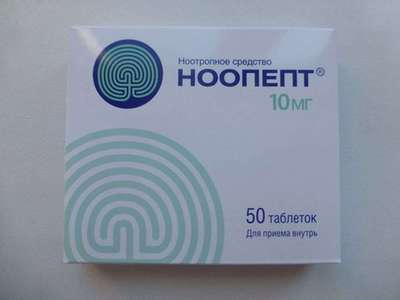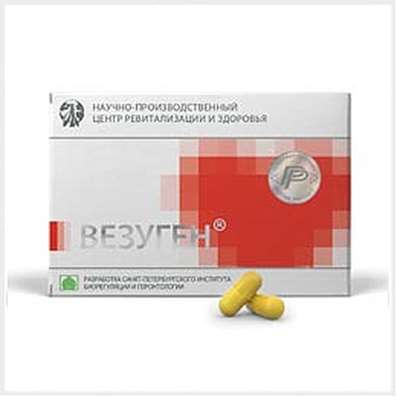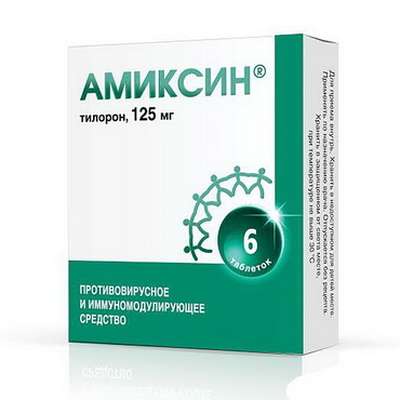Instruction for use: Dipyridamole
I want this, give me price
Trade name of the drug – Curanti, Dipyridamole, Curantil, Curantil, Persantin, Parsedil, Sanomil-Sanovel, Dipyridamole-FPO
Dipyridamole
The Latin name of the substance Dipyridamole
Dipyridamolum (genus. Dipyridamoli)
Chemical name
2,2 ', 2' ', 2' '' - [(4,8-Di-1-piperidinylpyrimido [5,4-d] pyrimidine-2,6-diyl) dinitrilo] tetrakis [ethanol]
Gross formula
C24H40N8O4
Pharmacological group:
Antiaggregants
Angioprotectors and microcirculatory correctors
Adenosinergic agents
The nosological classification (ICD-10)
G93.4 Unspecified Encephalopathy: bilirubin encephalopathy; lacunarity status; Tremor when portal-systemic encephalopathy; The latent hepatic encephalopathy; Atherosclerotic encephalopathy; Hypertensive encephalopathy; hypoxic encephalopathy; dismetabolic encephalopathy; Encephalopathy; brain lesion; Porto-caval encephalopathy; Vascular encephalopathy; Traumatic encephalopathy; encephalopathy; encephalopathy; Encephalopathy secondary genesis; Encephalopathy discirculatory; Encephalopathy portocaval; epileptic encephalopathy; hemorrhagic shock and encephalopathy syndrome; Subacute spongiform encephalopathy
I25 Chronic ischemic heart disease: Coronary heart disease on the background of hypercholesterolemia; Coronary heart disease is a chronic; Coronary heart disease; Stable coronary artery disease; Percutaneous transluminal angioplasty; Myocardial ischemia, arteriosclerosis; Recurrent myocardial ischemia
I63 Cerebral infarction: ischemic Stroke; Ischemic brain disease; Ischemic stroke; Ischemic stroke and its consequences; Ischemic cerebral stroke; Ischemic cerebrovascular accident; Ischemic brain damage; Ischemic brain damage; ischemic conditions; Cerebral ischemia; Acute hypoxia brain; Acute cerebral ischemia; Acute ischemic cerebrovascular accident; Acute cerebral infarction; Acute ischemic stroke; Acute period of ischemic stroke; Focal cerebral ischemia; Ischemic stroke; recurrent stroke; The syndrome of Morgagni-Adams-Stokes; Chronic cerebral ischemia; cerebrovascular stroke; embolic stroke; Ischemic brain damage
I67.9 Cerebrovascular disease, unspecified: lacunarity status; Angioneyropatiya; Arterial angiopathy; brain hypoxia; Encephalopathy; cerebral vascular disease and age-related; Coma in violation of cerebral circulation; Metabolic and cerebrovascular disorders; Violation of the blood supply to the brain; Cerebrovascular accidents; Violation of brain functions; Violation of the functions of the cerebral cortex; Violation of cerebral circulation; Cerebrovascular insufficiency; Acute cerebrovascular insufficiency; Acute ischemic attack; The defeat of the brain vessels; The progression of destructive changes in the brain; Disorders of cerebral circulation; The syndrome of cerebral insufficiency; Cerebral vascular insufficiency; Vascular encephalopathy; Vascular diseases of the brain; Vascular brain disorders; Vascular lesions of the brain; Functional brain disorders; Chronic cerebral ischemia; Chronic heart failure; Chronic cerebrovascular insufficiency; Chronic cerebrovascular insufficiency; Chronic violation of the blood supply to the brain; Cerebral insufficiency; Cerebral organic failure; encephalasthenia; cerebroasthenic syndrome; Cerebrovascular disease; Cerebrovascular pathology; cerebrovascular disease; cerebrovascular disorders; cerebrovascular disorders; Encephalopathy discirculatory
I73.9 Peripheral vascular disease, unspecified: angiospasm; Vasospasm / vasoconstriction; vasospastic disorders; Violation of venous microcirculation; Violation of circulation; Violation of peripheral blood circulation; Lack of peripheral blood circulation in the lower and upper limbs; Peripheral arterial occlusive disease; Peripheral arterial occlusive disease in stages III-IV on Fontaine; Peripheral vascular insufficiency; Peripheral vascular lesions; Peripheral vascular disorders; Peripheral circulatory disorder; spasm of artery; angiospasm; Functional peripheral arterial disease; Chronic occlusive disease; Chronic obliterating diseases of the lower limbs; Chronic arterial occlusive disease
I74.9 Embolism and thrombosis of unspecified arteries: Arterial embolism; Arterial thrombosis; Acute arterial thromboembolism; Acute vascular occlusion; Acute occlusion of arteries; Acute arterial thrombosis; Acute thrombosis; Acute thrombosis of peripheral arteries; Thrombosis; Thrombosis in the extracorporeal circulation; Thrombosis of peripheral arteries; Peripheral vascular thrombosis; Shunttromboz; Embolism; Embolism of peripheral arteries; Occlusive Arterial Disease
I78.9 Disease of capillaries, unspecified: Increased permeability of capillaries; Teleangiectasia; Violation of the permeability of capillaries; Violation of capillary blood flow; Microcirculatory trophic disorder; Disturbances of microcirculation; Disorders of microcirculation
I79.8 Other disorders of arteries, arterioles and capillaries in diseases classified elsewhere: Atherosclerotic occlusive lesions of peripheral arteries;Disturbances of microcirculation; Disorders of microcirculation; Obstruction in the coronary circulation system
I82.9 Embolism and thrombosis of unspecified vein: Venous embolism; Venous thrombosis; Diseases caused by blood clots in the vessels; Acute vascular occlusion; Acute venous thrombosis; Acute thrombosis of veins; Thrombosis; Thromboembolism; Phlebothrombosis; Embolism
I999 * Diagnosis of circulatory system diseases: Perfusion imaging (scintigraphy) of the myocardium; Perfusion studies of the heart; Echocardiography of the pericardium; Roentgenogram of the right ventricle; Radiograph of the left atrium; Contrast aortography; Film angiography; Computed tomography of the heart; Angiography; Angiography of the lungs; Angiography of the brain; Angiography of the heart; Angiography of the neck; Angiocardiography; Aortography; Aortography of the ascending aortic arch; Arteriography; Vasography; Venography; Visualization of blood flow; Visualization of the thoracic cavity; Intraarterial angiography; Intravenous angiography; Intravenous / intraarterial digital subtraction angiography; Stroke Diagnosis; Digital subtraction angiography; Doppler echocardiography; Research of the collateral circulation; Study of the root and arch of the aorta; Heart function examination; Cardioangiography; Cardiography; Contrast echocardiography; Coronary angiography; Coronary angiography; Lymphography; MR angiography; One-dimensional Doppler sonographic study of blood flow; Definition of localization of AV block; Peripheral arteriography; Damage to the main vessels; Radiography of blood vessels; Radiography of the heart; Selective arteriography; Selective coronary arteriography; Phlebography; Cerebral angiography; Cerebral arteriography; Digital subtraction angiography; Echocardiography; Angiography of the coronary arteries; Angiography of the left ventricle; Angiography of the left atrium; Angiography of the pulmonary artery; Angiography of the right ventricle of the heart; Plethysmography of veins
J06 Acute upper respiratory infections of multiple and unspecified location: Frequent colds viral diseases; Infections of the upper respiratory tract; Acute respiratory disease influenza character; for colds Pain; Acute colds; Colds; respiratory infection; Seasonal colds; Pain in infectious and inflammatory diseases of the upper respiratory tract; Bacterial infections of the upper respiratory tract; Bacterial respiratory infections; Viral disease of the respiratory tract; Viral respiratory tract infections; Inflammatory disease of the upper respiratory tract; Inflammation of the upper respiratory tract disease; Inflammation of the upper respiratory tract illness with difficult sputum; Inflammatory airway disease; Secondary infections with colds; Shortness of sputum in acute and chronic respiratory diseases; Upper respiratory tract infection; Infections of the upper respiratory tract; Respiratory Tract Infections; Infections of the respiratory tract and lungs; Infectious-inflammatory diseases of the upper respiratory tract and ENT-organs; Infectious-inflammatory diseases of the upper respiratory tract in children and adults; Infectious-inflammatory diseases of the upper respiratory tract; Infectious inflammation of the airways; respiratory infection; Qatar upper respiratory tract; Catarrh of the upper respiratory tract; Catarrhal symptoms of the upper respiratory tract; Cough in diseases of the upper respiratory tract; Coughing with a cold; SARS; ARI; ARI with rhinitis phenomena; Acute respiratory infection; Acute infectious and inflammatory disease of the upper respiratory tract; Acute respiratory disease; Sore throat or nose; Respiratory viral infections; Respiratory diseases; Respiratory infections; Recurrent respiratory infections; Secondary infection with influenza; cold in the chest; Feverish condition with flu
J11 Influenza, virus not identified: Influenza; Influenza in the early stages of the disease; Influenza in children; cold in the chest; Begins flu-like condition; Acute disease parainfluenza; parainfluenza; parainfluenza state; influenza epidemics; The pains of the influenza
N05 Unspecified nephritic syndrome: Kidney infections; Glomerulonephritis; Glomerulosclerosis; Idiopathic nephritis; Immune kidney disease; Immune kidney diseases cytotoxic; Immune glomerulopathies; Mesangial proliferative glomerulonephritis; Membrane-proliferative glomerulonephritis; Membranous glomerulonephritis; Nephritis; Jade; Postinfectious glomerulonephritis; Post-streptococcal glomerulonephritis; Segmental glomerulosclerosis
O36.5.0 * Placental insufficiency
P22 Respiratory distress in a Infant [distress]: Respiratory distress syndrome in infant; Respiratory distress syndrome of newborns; Respiratory distress syndrome in premature infants; Distress syndrome in premature newborns; Post-fixation state in newborns; Respiratory distress in newborns; Syndrome of respiratory disorders; Disease of hyaline membranes
T82.2 Complication of mechanical origin associated with coronary artery bypass graft: Obliteration of arteriovenous shunt
Z100 * CLASS XXII Surgical practice: Abdominal surgery; adenomectomy; Amputation; Coronary angioplasty; Angioplasty of the carotid arteries; Antiseptic skin treatment for wounds; Antiseptic Hand; Appendectomy; atherectomy; Balloon coronary angioplasty; Vaginal hysterectomy; The coronary bypass; Interventions in the vagina and cervix; Interventions on the bladder; Intervention in the mouth; Restoration and reconstructive surgery; Hand hygiene of medical personnel; Gynecologic surgery; Gynecological intervention; Gynecological surgery; Hypovolemic shock during operations; Disinfection of purulent wounds; Disinfection of wounds edges; Diagnostic intervention; Diagnostic procedures; Cervical Diathermocoagulation; Long-surgery; Replacing the fistula catheters; Infection in orthopedic surgery; Artificial heart valve; cystectomy; Short-term outpatient surgery; Short-term operation; Short surgical procedures; Krikotireotomiya; Blood loss during surgery; Bleeding during surgery and in the postoperative period; Kuldotsentez; laser photocoagulation; laser coagulation; retinal laser coagulation; Laparoscopy; Laparoscopy in Gynecology; CSF fistula; Small gynecological operations; Small surgical procedures; Mastectomy and subsequent plastic; mediastinotomy; Microsurgical operations on the ear; Mukogingivalnye operation; suturing; Minor surgery; neurosurgical operation; Immobilization of the eyeball in ophthalmic surgery; testectomy; pancreatectomy; Perikardektomiya; The period of rehabilitation after surgery; The period of convalescence after surgery; Percutaneous transluminal coronary angioplasty; Pleural thoracentesis; Pneumonia postoperative and posttraumatic; Preparation for surgical procedures; Preparation for surgery; Preparation of the surgeon's hands before surgery; Preparation of the colon for surgical procedures; Postoperative aspiration pneumonia in neurosurgical and thoracic surgery; Postoperative nausea; Postoperative bleeding; postoperative granuloma; postoperative shock; The early postoperative period; myocardial revascularization; Radiectomy; gastric Resection; bowel resection; uterine Resection; liver Resection; enterectomy; Resection of part of the stomach; Reocclusion of the operated vessel; Bonding tissues during surgical procedures; Removal of sutures; Condition after eye surgery; Condition after surgery; Condition after surgery in the nasal cavity; Condition after gastrectomy; Status after resection of the small intestine; Condition after tonsillectomy; Condition after removal of the duodenum; Condition after phlebectomy; Vascular surgery; Splenectomy; Sterilization of surgical instruments; Sterilization of surgical instruments; sternotomy; Dental surgery; Dental intervention in periodontal tissues; strumectomy; Tonsillectomy; Thoracic surgery; Thoracic surgery; total gastrectomy; Transdermal intravascular coronary angioplasty; Transurethral resection; Turbinektomiya; Removal of a tooth; cataract surgery; Removal of cysts; tonsillectomy; Removal of fibroids; Removing the mobile primary teeth; Removing polyps; Removing broken tooth; Removal of the uterus body; Removal of sutures; Fistula likvoroprovodyaschih ways; Frontoetmoidogaymorotomiya; Surgical infection; Surgical treatment of chronic limb ulcers; Surgery; The surgery in the anal area; The surgery on the colon; Surgical practice; The surgical procedure; Surgical interventions; Surgery on the gastrointestinal tract; Surgical procedures on the urinary tract; Surgical procedures on the urinary system; Surgical intervention of the genitourinary system; Surgical procedures on the heart; Surgical manipulation; surgery; Surgery on the veins; Surgical intervention; Vascular surgery; Surgical treatment of thrombosis; Surgery; cholecystectomy; Partial gastric resection; hysterectomy; Percutaneous transluminal coronary angioplasty; Percutaneous transluminal angioplasty; Coronary artery bypass; tooth Extirpation; Extirpation of milk teeth; pulpectomy; pulsative cardiopulmonary bypass; tooth Extraction; teeth Extraction; cataract extraction; Electrocoagulation; endourological intervention; episiotomy; Etmoidotomiya; Complications after tooth extraction
Z95.2 Presence of a prosthetic heart valve: Mechanical prosthesis of the heart valves; Prosthetic heart valves; Cardiac valve prosthetics
CAS Code
58-32-2
Description of Ginkgo Dipyridamole
Crystalline yellow powder, with a bitter taste, odorless. Soluble in dilute acids, methanol and chloroform and almost insoluble in water. Molecular weight 504.53.
Pharmacology
Mode of action - Vasodilator, antiaggregational, antiadhesive, arteriodilating.
Influences both primary and secondary aggregation of platelets. It inhibits their adhesion, potentiates the antiplatelet effect of prostacyclin. In the mechanism of action, the inhibition of phosphodiesterase and the increase in cAMP content in platelets are essential, which leads to inhibition of their aggregation. In addition, the release of prostacyclin by endothelial cells is stimulated, thromboxane A2 is inhibited. It has a vasodilating effect on coronary vessels by inhibiting adenosine deaminase (this property is used for conducting pharmacological tests), inhibiting the reverse capture of adenosine by erythrocytes (possibly by affecting a special nucleoside transporter in the cell membrane) and increasing its concentration in the blood. Adenosine stimulates adenylate cyclase and, in turn, increases the content of cAMP in platelets. Along with this, it affects the smooth muscles of the vessels and prevents the release of catecholamines.
After oral administration, it is rapidly absorbed from the digestive tract. Bioavailability is 37-66%. Cmax - 75 min. Binding to plasma proteins is 91-99% (mainly with albumin and acid alpha-1 glycoprotein). Quickly penetrates into the tissue. Two-phase pharmacokinetics - in the first phase of T1 / 2 - about 40 minutes; In the second phase - about 10 hours Metabolized mainly in the liver, 20% of the drug is included in enterohepatic circulation. Excreted with bile in the form of monoglyukuronide and a small amount of diglucuronide. Renal elimination is negligible. Possible cumulation (mainly with impaired liver function).
As an anti-aggregation agent is often used in combination with acetylsalicylic acid. It inhibits the adhesion of platelets in the vessels and, to a lesser extent, aggregation. Antiaggregation effect occurs at a plasma concentration of 0.1 μg / ml. Dose-dependent extends the abnormally shortened lifetime of thrombocytes. Expands coronary arteries, especially unchanged, causes the phenomenon of intercoronary stealing. Dipyridamole stress-echocardiography in the diagnosis of IHD in patients with angiographically unchanged coronary arteries is highly sensitive in combination with high specificity (91 and 83%, respectively); The sensitivity of this test is higher in multivessel lesions in patients with well-developed collaterals and in patients with reduced regional myocardial perfusion. Normalizes venous outflow, reduces the incidence of deep vein thrombosis in the postoperative period. Improves microcirculation in the retina of the eye, kidney glomeruli. Reduces the resistance of the cerebral vessels, it is effective for dynamic disorders of the cerebral circulation. Has a preventive effect with regard to thrombosis of implants and venous coronary shunts (in combination with anticoagulants). In combination with acetylsalicylic acid prevents the formation of thrombotic overlays on the prostheses of the heart valves. According to the angiographic study, the combination of acetylsalicylic acid with dipyridamole slows the progression of peripheral atherosclerosis. In obstetric practice, corrects placental blood flow, prevents dystrophic changes in the placenta (with the threat of preeclampsia), eliminates hypoxia of the fetal tissues and promotes the accumulation of glycogen in them. It is an inducer of interferon and has a modulating effect on the functional activity of the interferon system; Increases non-specific antiviral resistance to viral infections.
Application of substance of the Dipyridamole
Prevention of arterial and venous thrombosis, incl. After the operation of prosthetic valve of the heart; Prevention of occlusion of stents and aortocoronary shunts (in combination with acetylsalicylic acid); Treatment and prevention of cerebral circulation disorders according to the ischemic type; encephalopathy; Disorders of microcirculation of any genesis (as part of complex therapy); Chronic obliterating diseases of the vessels of the lower extremities, especially in the presence of risk factors (arterial hypertension, smoking); Primary and secondary prevention of IHD, especially with intolerance to acetylsalicylic acid; Prevention of placental insufficiency in complicated pregnancies; Treatment and prevention of DIC syndrome in children with infectious toxicosis and septicemia; Prevention and treatment of influenza and ARVI; Carrying out dipyridamole-thallium-201 perfusion scintigraphy with physical activity, dipyridamole stress-echocardiography.
Contraindications for Dipyridamole
Hypersensitivity, acute myocardial infarction, unstable angina, widespread stenosing coronary artery atherosclerosis, subaortic stenosis of the aorta, decompensated chronic heart failure, arterial hypotension, collapse, severe arterial hypertension, severe heart rhythm disorders, hemorrhagic diathesis, chronic obstructive pulmonary disease, high-risk diseases Development of bleeding (including peptic ulcer of the stomach and duodenum), liver failure, chronic renal failure.
Restrictions
Not recommended for children and adolescents under 12 years of age (safety and efficacy not determined).
Pregnancy and breast-feeding
In pregnancy and breastfeeding it is possible if the intended benefit to the mother exceeds the potential risk to the fetus and the baby (enters the breast milk).
The action category for fetus by FDA is B.
Side effect of Dipyridamole
From the nervous system and sensory organs: weakness, dizziness, headache, sensation of ear congestion, noise in the head.
From the side of the cardiovascular system and blood (hematopoiesis, hemostasis): palpitations, tachycardia, bradycardia, flushing to the face, coronary steal syndrome (with doses more than 225 mg / day), lowering blood pressure (especially with rapid on / in injection), Thrombocytopenia, changes in the functional properties of platelets, bleeding, increased bleeding.
On the part of the intestine: nausea, vomiting, diarrhea, epigastric pain.
Allergic reactions: skin rash, hives.
Other: arthritis, myalgia, rhinitis.
Interaction
Antacids reduce Cmax dipyridamole due to decreased absorption. Acetylsalicylic acid and indirect anticoagulants increase the effect, heparin increases the risk of hemorrhagic complications. When combined with clopidogrel, the risk of bleeding increases. When fludarabine is used concurrently with fludarabine, the effects of fludarabine are likely to decrease. Dipyridamole increases the plasma concentration and cardiovascular effects of adenosine. Dipyridamole may interfere with the anticholinesterase effect of cholinesterase inhibitors, and potentially aggravation of the course of myasthenia gravis. Do not mix dipyridamole with other drugs in one syringe (precipitation may occur).
Overdose
Symptoms: a short-term decrease in blood pressure and tachycardia.
Treatment: symptomatic therapy, including the administration of vasopressor agents.
Routes of administration
Inside, I.V.
Precautions for the substanceof Dipyridamole
To reduce the dyspeptic phenomena are taken with milk.
If there is a syndrome of coronary stealing to improve intracardiac blood flow, the appointment of aminophylline is indicated.

 Cart
Cart





